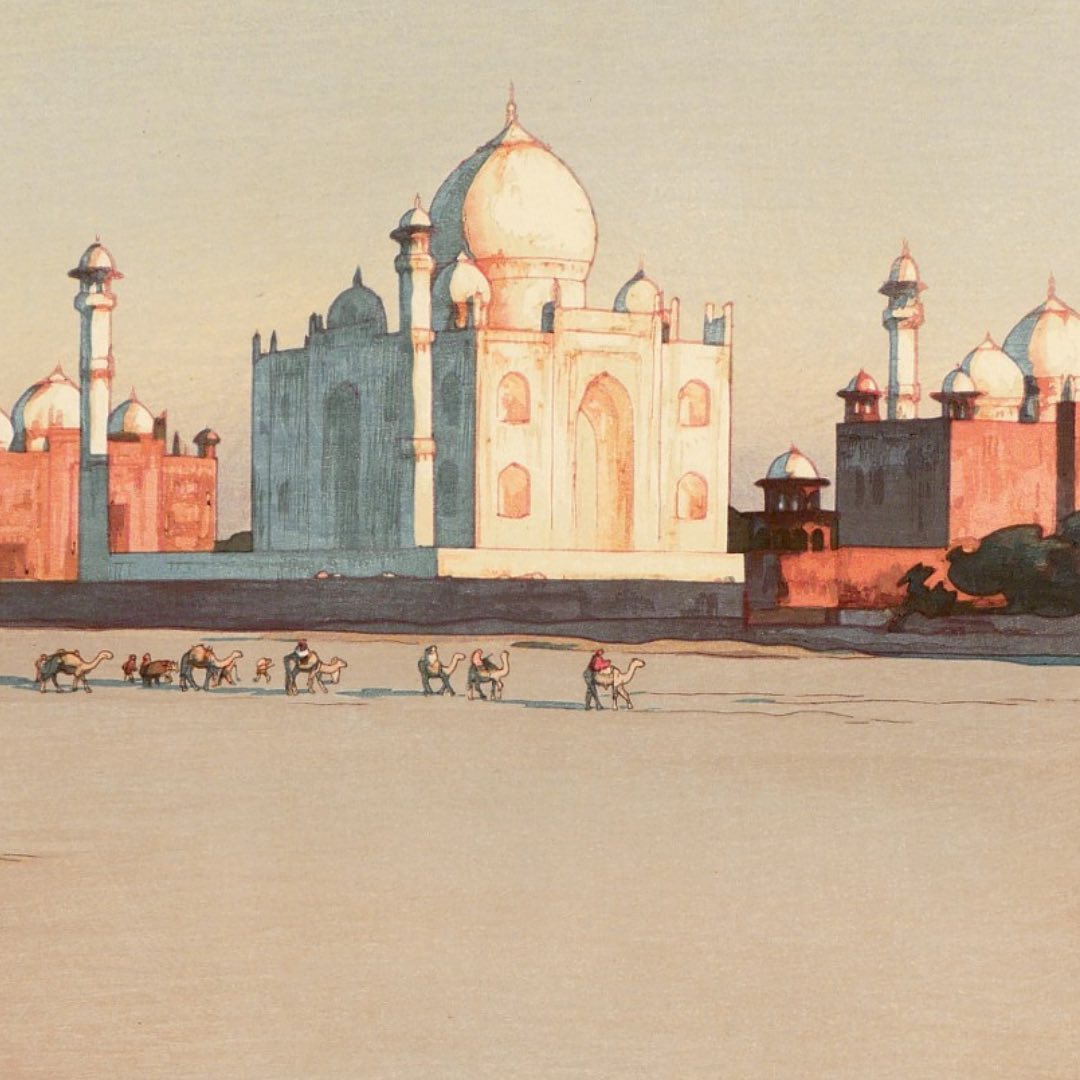From the series ‘India and Southeast Asia’, artist Hiroshi Yoshida (1876-1950) travelled to India with the sole purpose of sketching the Taj Mahal in Agra. Fascinated by the charm of the building, six prints were created each depicting the building at different times throughout the day.
The Taj Mahal was built by assignment in 1631 by the Mughal emperor Shah Jahan in loving memory of his late wife Mumtaz Mahal who had died earlier that year. Although the Taj Mahal’s name itself is believed to be derived from the Persian تاج محل tāj mahall, meaning “crown” (tāj) and “palace” (mahall), it is also thought that the pronunciation of the name “Taj” comes from the corruption of the second syllable “Mumtaz”, illustrating the lasting memory of Jahan’s late wife and the love and devotion he intended the building to signify. Shah Jahan was later entombed there where he now remains forever with his wife.
Situated at the bank of the river Yamuna, Yoshida beautifully captures the white marble mausoleum standing majestically against the sun beyond a dry riverbed where a caravan passes. During the rainy season, the river will rise to meet the edge of the stately building.
Scroll through to see a few more images of the Taj Mahal in this wonderful series, as well as a contemporary photograph and an Indian artwork of Shah Jahan and Mumtaz Mahal.
1
Title: Approach to Agra, No. 3
Date: 1931-1932
2
Title: Morning Mist in Taj Mahal, No. 5
Date: 1931-1932
3
Title: Moonlight of the Taj Mahal, No. 6
Date: 1931-1932
4
Photograph of the The Taj Mahal, Agra
5
Shah Jahan and Mumtaz Mahal
Follow @ezenjapan for daily discoveries of Japanese art and culture
#arteducation #artmuseum #artwork #arthistory #discoverart #ezenjapan #fineart #japan #japaneseantiques #japaneseart #japaneseculture #japanesehistory #japanesepainting #japaneseprint #japanesestyle #japanesewoodblock #japanesedesign #londongallery #printart #ukiyoe #woodblockprint #浮世絵 #版画 #tajmahal #india #indiaart #hiroshiyoshida #tajmahalpalace #indianhistory

